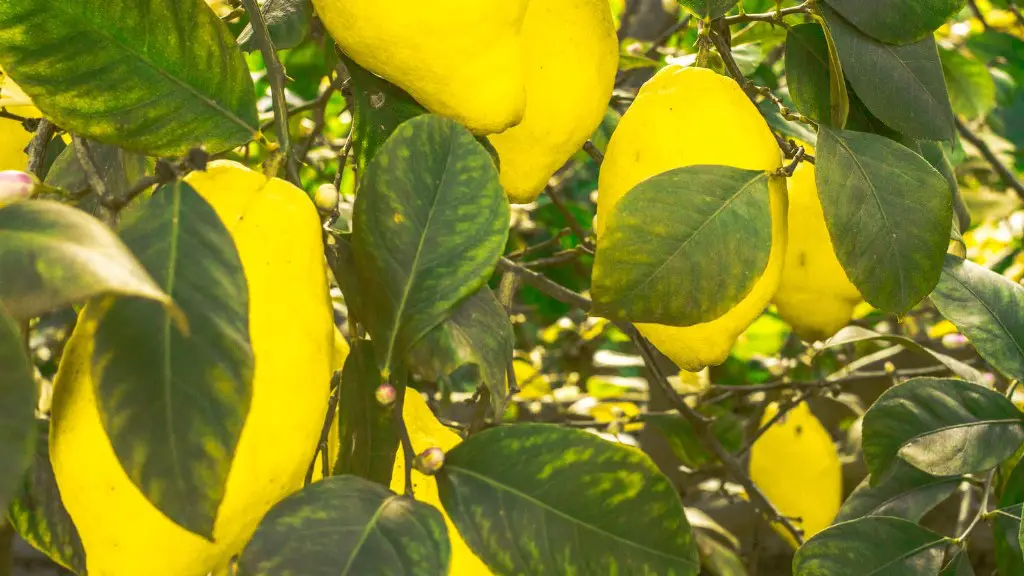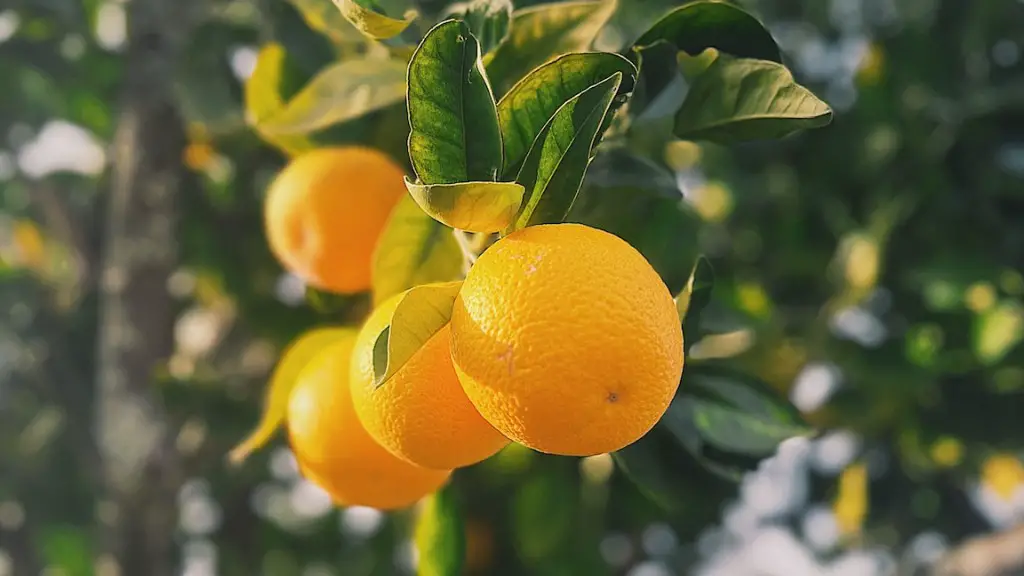For many garden enthusiasts, growing citrus plants such as lemon trees is an enjoyable activity and can even be done right in your own home. By following a few simple steps, anyone can learn how to grow a lemon tree from seed and have it thrive. Here are the basic steps to get you started.
Firstly, the most important step in growing a lemon tree is to get good-quality seeds. To do this, buy the seeds from a reputable nursery or store. If you don’t have access to one, you can order online. Once you have obtained the seeds, it is important to store them properly in a cool, dry place until you are ready to plant them.
Secondly, when it comes to planting the seeds, you will want to find a pot large enough for the roots to spread out. Plus, make sure that the pot has adequate drainage. You can fill the pot with a light-soil mix such as a combination of peat moss, perlite, and vermiculite or topsoil. Plant two or three seeds at one-inch intervals and cover them with soil, ensuring there is no air gap.
Thirdly, to ensure that the seeds develop properly, they must be watered regularly. However, make sure not to saturate the soil so as not to drown the seedlings. You also want to avoid letting the soil dry out as this can cause the seedlings to die.
Fourthly, it is important to provide the seedlings with the best growing conditions possible. So, place the pot in an area with plenty of indirect sunlight. This can be done by placing the pot near a window that is exposed to sunlight for several hours a day. Plus, you want to make sure that the temperature remains between 65°F and 80°F.
Fifthly, the seedlings should begin to germinate within 7 to 10 days. Once the seedlings have grown to a few inches tall, you can begin to transfer the lemon tree to a larger pot with fresh soil. Make sure that the pot has at least four inches of space between its bottom and the soil so that it is able to drain properly. Additionally, the new pot should be at least one foot in diameter and have proper drainage.
Lastly, once the lemon tree has been transferred to a larger pot, it is important to fertilize it regularly. For example, a liquid fertilizer that is made specifically for citrus trees should be applied to the soil every two weeks. This will help the lemon tree to grow strong and develop healthy, juicy fruits.
Fertilizing and Pruning your Lemon Tree
Once your lemon tree has been transferred to a larger pot and is fertilized regularly, you may want to start looking into additional methods to help ensure it grows healthy and strong. Fertilizing the lemon tree is important, but so is pruning and applying mulch. Taking these extra steps can help maximize the growth and health of your tree.
When it comes to pruning, it is best to do this in the early spring. Pruning can help keep the tree healthy and help it direct its energy towards growing and producing more fruits. To prune, you should remove any dead branches, as well as any branches that are crossing or rubbing against each other, so the tree can promote a better airflow.
Mulching is another method for helping the lemon tree grow healthy and produce juicy fruits. Mulch helps maintain the moisture of the soil and provides extra insulation for the root system, both of which are beneficial for the growth of the lemon tree. To mulch, spread two to three inches of organic material such as grass clippings or wood chips around the edges of the pot.
Lastly, when it comes to watering, it is important to make sure you are not over-watering. In general, the lemon tree needs to be watered once a week. When watering, make sure you do so generously but also be careful not to get the leaves wet.
Temperature Requirements
In order to promote optimal growth and health in the lemon tree, it is essential to be mindful of the temperature it is exposed to. While the lemon tree is able to survive a wide range of temperatures, it is best to keep the temperatures between 60-85°F (16-29°C). Additionally, the temperature should not drop below 45°F (7°C) as this may cause permanent damage to the tree.
In addition to the temperature of its environment, it is important to make sure that the air around the lemon tree is not too dry or too humid. Lemon trees prefer humidity levels of 40-60% to prevent any fungal diseases or yellowing leaves. You can increase the levels of humidity around the tree by occasionally misting it or placing a humidifier in the room.
You can also keep the humidity levels up by placing a saucer filled with water near the pot. The water should be changed every couple of days to keep the air fresh. Additionally, try placing a fan near the tree in order to simulate a gentle breeze, as this will help bring cool air to the tree.
Pests and Diseases
In order to ensure the lemon tree is healthy and continues to grow properly, it is important to look out for any signs of pests and diseases. Some of the diseases to look out for are fungi, root rot, and blight. In order to prevent any of these diseases, make sure you are watering your tree properly and not over-watering.
As far as pests that could affect the tree, some of the more common pests are mealybugs, citrus red mites, and aphids. The most effective way to get rid of them is by spraying the tree with an insecticide that is specifically made for citrus plants. Additionally, make sure the room the tree is in is kept clean and free of any standing water.
Another way to get rid of any pests or diseases from affecting your tree is to strengthen its natural defenses. To do this, make sure the tree is getting all the necessary nutrients through fertilizing. You can also add Epsom salts to the soil to increase levels of zinc and magnesium, both of which can help the tree retain its natural defenses.
Harvesting Your Lemon Tree
When the time arrives to harvest the lemon tree, you will want to make sure that the fruits are ready. To do this, look at the color of the lemons, as they should at least be turning yellow and a few of them should have begun to change to a light orange color. Additionally, push on a few of the lemons and if they are soft and give slightly, they are ready to be harvested.
When harvesting the lemons, you will want to cut them off the tree with pruning shears and make sure you are cutting them at the stem. Once all the lemons are picked, rinse off the fruits to remove any dirt or debris. Make sure to inspect the lemons for any spots or blemishes and discard any that don’t look fresh.
Once the lemons have been picked, they can be used right away or stored in a cool, dry place. If you are planning to store them, place the lemons in a paper bag or a container lined with paper towels and make sure to keep them out of direct light. This will ensure that the lemons remain fresh for up to two weeks.
Tips for Growing a Healthy Lemon Tree
Finally, if you want your lemon tree to remain healthy and thrive, you will want to keep in mind the following tips: Make sure to prune the tree regularly, provide it with enough sunlight and water, and keep it in a warm, draft-free area. Additionally, inspect your lemon tree for any pests or diseases and if necessary, consult with a professional.
It is also beneficial to fertilize the tree regularly with an organic fertilizer. This will help enhance its growth and also help it become resistant to various pests and diseases. Additionally, be sure to talk to a professional if you ever have any doubts or concerns about the tree’s health.
Lastly, while being patient is key when growing a lemon tree, remember to enjoy the experience. Growing a lemon tree is an immensely satisfying activity and can bring you many rewards by harvesting delicious, juicy lemons.



